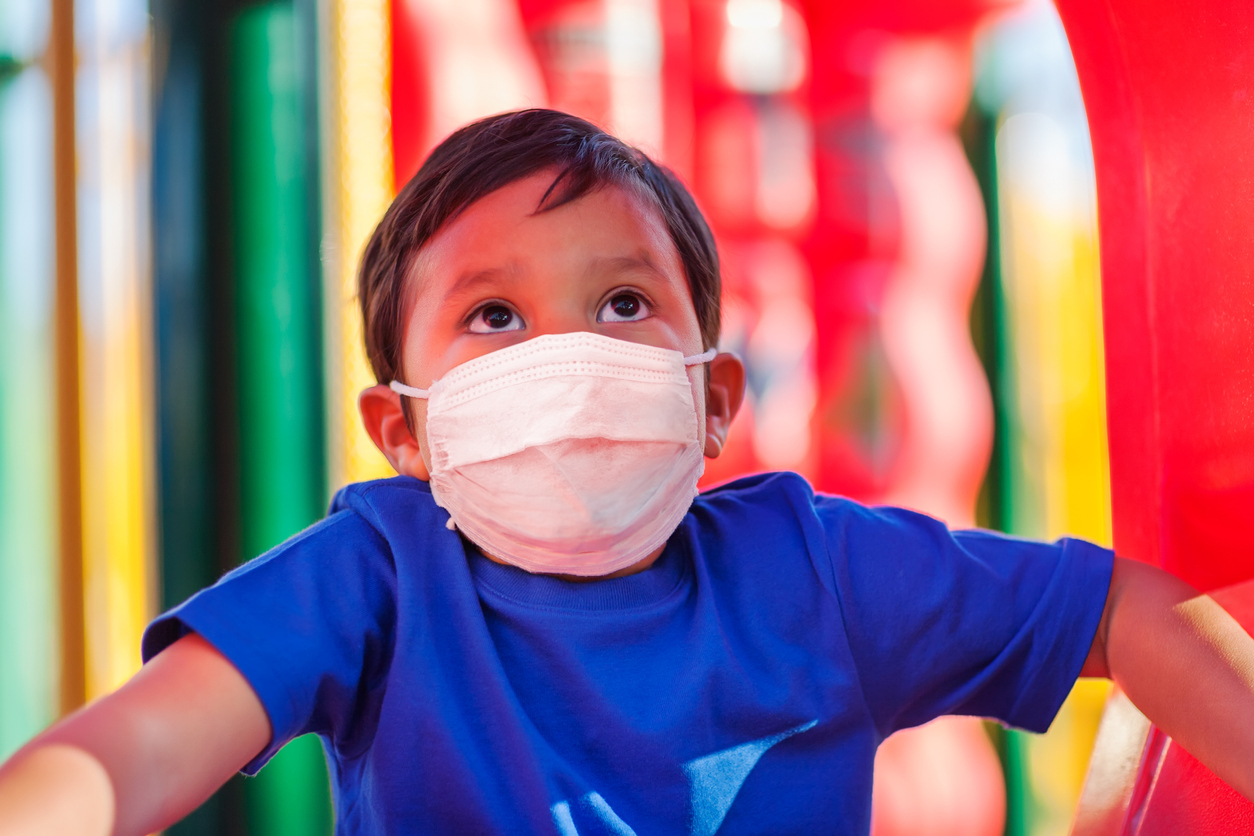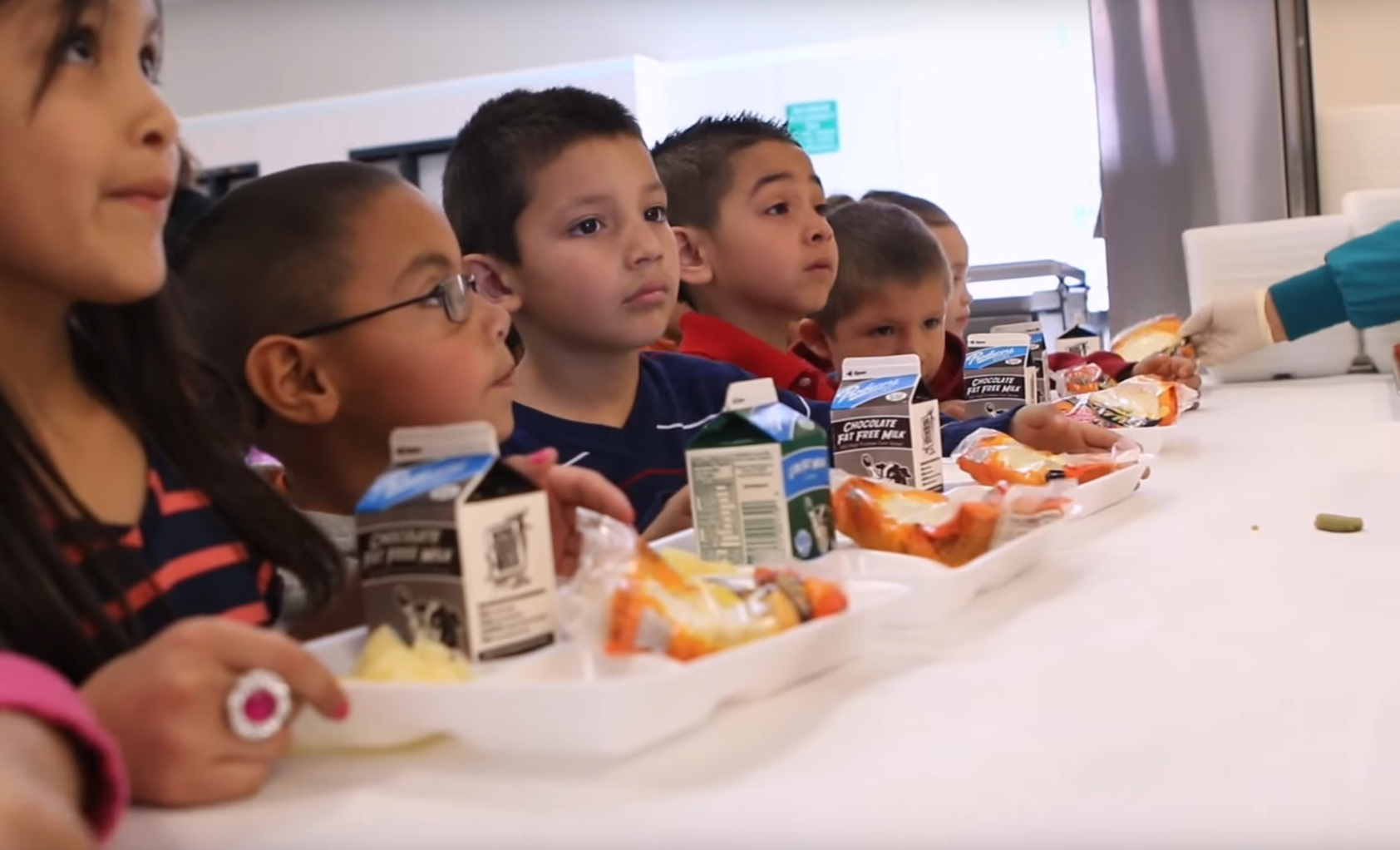
Share On Social!
One in six U.S. youth have obesity, but the issue is worse among Latinos and other youth of color, according to a new report from the Robert Wood Johnson Foundation (RWJF).
More than one in five Latino (21.4%), Black (23.8%), and American Indian/Alaska Native (28.7%) children ages 10-17 have obesity.
The reasons? Structural racism and systemic health inequities.
Racist policies and discriminatory practices affect our food system, access to healthcare, affordable housing, and critical family supports like childcare, the RWJF report says. Together, the effects of these policies and practices force families into hard choices on how to spend limited resources, especially during COVID-19.
“The state of childhood obesity in America is an urgent call to action for leaders at all levels and across all sectors,” said Jamie Bussel, senior program officer at RWJF. “Obesity is a symptom of deep-rooted challenges that have only been made worse by the pandemic and are a warning sign that our nation’s policies are failing our kids. We must make real, systemic change to set kids on a path to better health.”
The Latest Statistics on Obesity and Youth
RWJF’s report, From Crisis to Opportunity: Reforming Our Nation’s Policies to Help All Children Grow Up Healthy, has state-by-state and national data on childhood obesity rates.
Key findings are:
Obesity disparities by race/ethnicity persist. In 2019-2020, Asian children ages 10-17 had the lowest obesity rate (8.1%) followed by White children (12.1%). Obesity rates were significantly higher for Black (23.8%), Hispanic (21.4%), and American Indian/Alaska Native (28.7%) children.
In Philadelphia, existing disparities in obesity rates seem to be worsening. Rates are rising more for Latino and Black children than for white children or those in families with higher incomes.
 Childhood obesity surged during the COVID-19 pandemic. CDC data show the national childhood obesity rate rose 3 percentage points between 2019 and 2020.
Childhood obesity surged during the COVID-19 pandemic. CDC data show the national childhood obesity rate rose 3 percentage points between 2019 and 2020.
In Southern California, the rate of overweight and obesity among youth ages 5-11 increased from 36.2% pre-pandemic to 45.7% during the pandemic.
Kentucky had the highest youth obesity rate. Six states had youth obesity rates significantly higher than the national rate (16.2%). These are Kentucky (23.8%), Mississippi (22.3%), Louisiana (22.2%), West Virginia (21.9%), Alabama (21.8%), and Tennessee (20.8%).
“The bottom line is: Childhood obesity rates are far too high,” said Dr. Amelie G. Ramirez, director of the RWJF’s Salud America! program at the Institute for Health Promotion Research at UT Health San Antonio. “Children of color, and those furthest from economic opportunity, are at greatest risk. The COVID-19 pandemic is probably making things worse.”
Why Are Obesity Rates High among Latino Youth?
Latinos face health barriers because of structural and systemic policies that curb their access to income, quality housing, transportation, medical care, food, jobs, schools, parks and other social determinants of health.
Individuals have no choice when it comes to these structural health barriers.
“Economic stressors, food insecurity, less consistent access to healthy meals at school, combined with increased sedentary time, sleep dysregulation, reduced physical activity, and social isolation have made it harder for families to stay healthy,” said Dr. Sandra G. Hassink, medical director of the American Academy of Pediatrics Institute for Healthy Childhood Weight.
 This, in turn, leads to disparities in diabetes, cancer, and other chronic health conditions.
This, in turn, leads to disparities in diabetes, cancer, and other chronic health conditions.
Obesity may be one of the most important predictors of severe illness among young patients, according to NYU School of Medicine.
“Weight can fluctuate in later life, and we sometimes see sharp declines in weight in Alzheimer’s disease. However, this pattern has yet to be well-characterized in a diverse Latino cohort,” said Dr. Hector M. González of UC San Diego in a press release.
How Can Policymakers Address Obesity among Latino and All Youth?
Addressing the root causes of obesity, such as improving access to healthy food, can help reduce obesity.
RWJF’s new report highlights how programs and policies play a critical role in obesity prevention. This is especially true for Latinos and other groups at highest risk for health disparities:
- Make universal school meals permanent. Provide resources to ensure every child has access to a consistent source of healthy meals.
 Extend eligibility for WIC, the Special Supplemental Nutrition Program for Women, Infants, and Children, to postpartum mothers through the first two years after the birth of a baby and to children through age 6. Doing so would align with participation in school meal programs so that there is no gap in support. Check out the WIC for Kids Act.
Extend eligibility for WIC, the Special Supplemental Nutrition Program for Women, Infants, and Children, to postpartum mothers through the first two years after the birth of a baby and to children through age 6. Doing so would align with participation in school meal programs so that there is no gap in support. Check out the WIC for Kids Act.- Extend and expand other programs that pull families out of poverty and reduce food insecurity, such as the expanded Child Tax Credit. After just the first month of expanded payments, the percentage of families with children reporting that they sometimes or often did not have enough to eat declined significantly.
- The federal government, and state governments which have not done so, must close the Medicaid coverage gap. Doing so would improve health outcomes and reduce racial and ethnic disparities.
- The federal government should develop a consistent approach to collecting timely data on obesity rates. Organize data by race, ethnicity, and income level to ensure prevention strategies are grounded in evidence and equity.
“Unless we confront inequities as a moral imperative—from education to health care access to employment opportunities and most every facet of our society—the United States will continue to be a place where a person’s ability to live the healthiest life possible and thrive will be heavily influenced by skin color, income, and neighborhood,” Ramirez said.
How Can You Address the Systemic Inequities Behind Obesity Rates in Latino and Other Youth of Color?
Go here to learn how to “think structuralist” instead of individualist.
“Improving health equity depends on improving structural conditions and decreasing social vulnerability to prevent the emergence of unmet social needs,” writes Salud America! curator Amanda Merck.
You can help your city shift more rapidly to structuralist action.
Download the free Salud America! “Get Your City to Declare Racism a Public Health Crisis Action Pack“!
The Action Pack will help you gain feedback from local social justice groups and advocates of color. It will also help you start a conversation with city leaders for a resolution to declare racism a public health issue along with a commitment to take action to change policies and practices. It will also help build local support.
Editor’s Note: Main image is from The State of Obesity website via tilthalliance.org.
By The Numbers
142
Percent
Expected rise in Latino cancer cases in coming years



